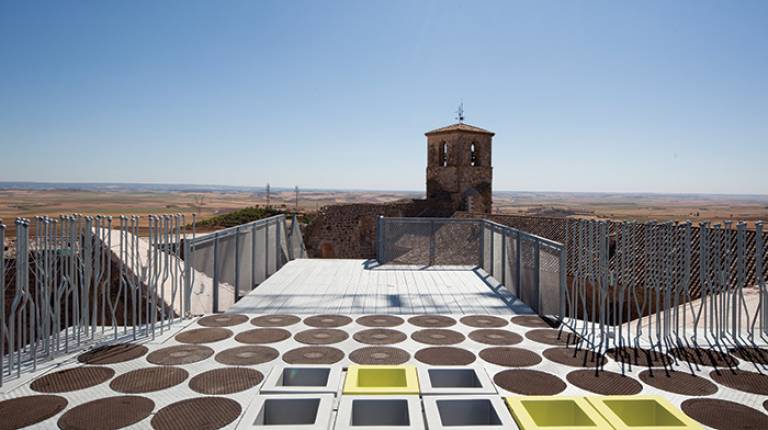
Overview
Garcimuñoz Castle, in the Spanish province of Cuenca, was first the site of a 10th-century Moorish citadel, before becoming residence for the prominent Villena family in the 12th century and, from 1708, the site of a church that is still in use today. The castle is therefore a complex site of built additions and partial demolitions from different historical periods. The current poor state of conservation makes it difficult to show its full heritage value.
This innovative refurbishment consolidates and reinforces ruins from Arab, Medieval and Neoclassical times. It adds contemporary architectural value to the building's heritage, while transforming the castle into sustainable and safe spaces for the public to visit. The refurbishment introduces a network of footbridges, platforms, stairs and rails. Its elements are strategically placed to differentiate the building's different historical periods and to highlight views of building parts from architectural periods that have not been seen together before. The renovation can be said to work as an orthographic system enabling us to decipher a chaotic and incomplete inherited 'text'.
The refurbishment of Garcimuñoz Castle also integrates digital media and new meeting venues in order to engage the local population socially and facilitate renewed cultural and economic activities in a deprived rural area. This project aims to show how innovative architectural design can refurbish heritage sites imaginatively, while also strengthening local economies, enabling public access for all, and supporting their socially and environmentally sustainable use for the long term. It aims to open new strategic visions for the restoration of other castles.
People
Izaskun Chinchilla Moreno
View Izaskun's profile
Send Izaskun an email
Image Credits
(01) © Miguel de Guzman.
(02) © Miguel de Guzman.
(03) © Miguel de Guzman.
(04) © Miguel de Guzman.
(05) © Miguel de Guzman.
(06) © Miguel de Guzman.
Rural Close
Close

